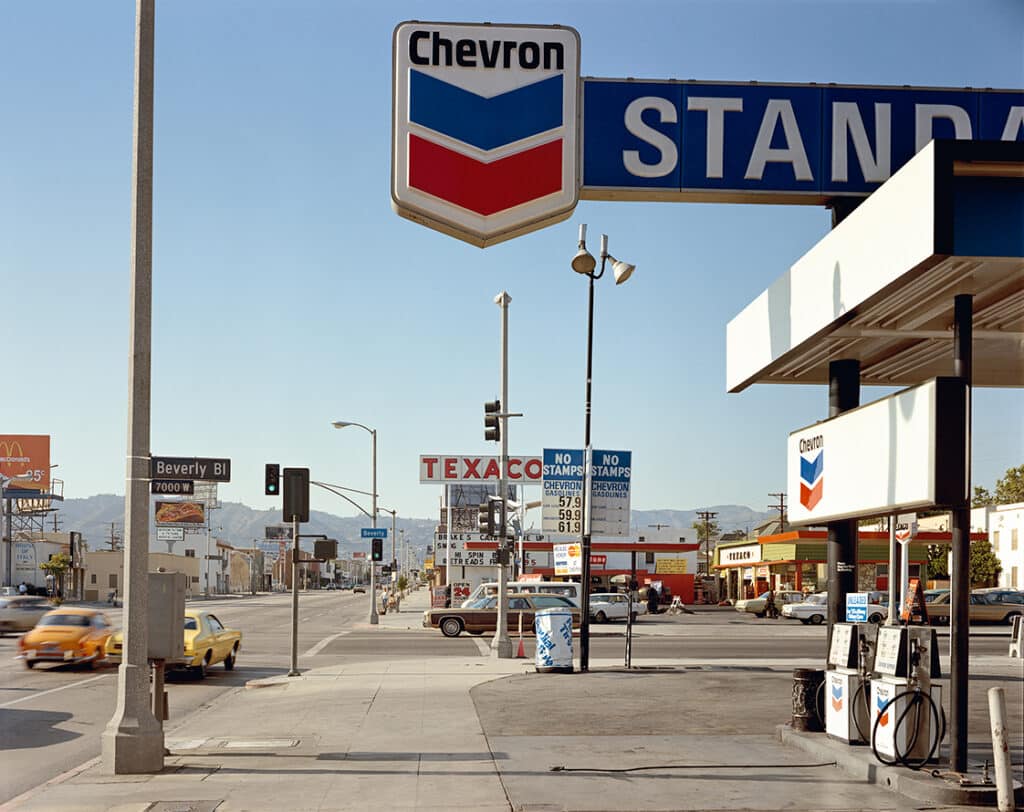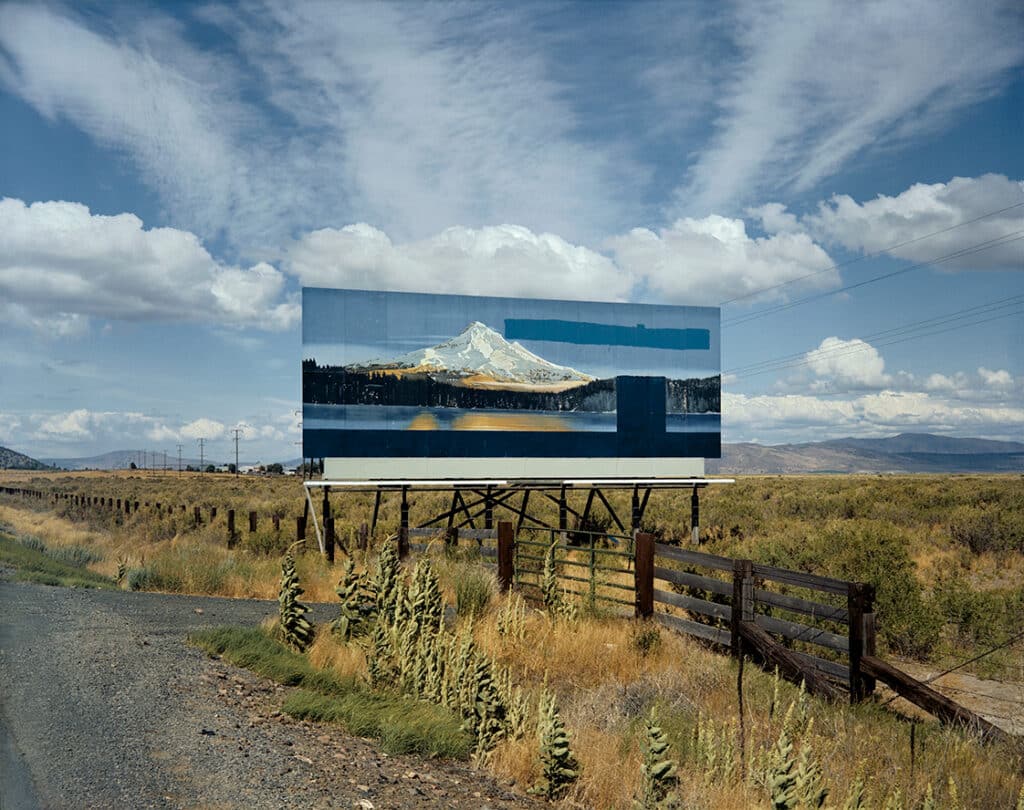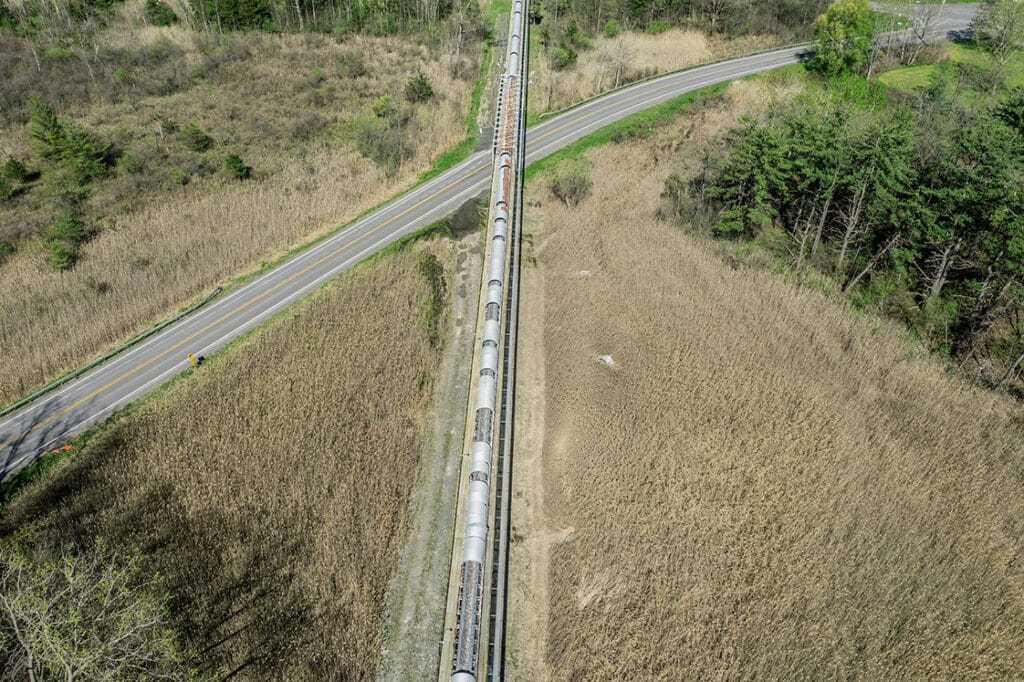Stephen Shore is a product of the Beat Generation, deeply influenced by Jack Kerouac’s On the Road. He fondly recalls that he was born in 1947, the same year Kerouac embarked on his iconic road trip across the United States, an adventure that would inspire his legendary narrative. The same year, Henri Cartier-Bresson traveled across North America, capturing the South and the West through his lens, producing a series of photographic reports. These images were published in the early 1950s in Harper’s Bazaar, during the period Robert Frank was emerging as a young photographer for the magazine.
“It seems that something special occurred in 1947: a desire to get into a car and just drive,” Shore reflects. “The war had ended, and troops were returning home. America had endured twenty years—a whole generation—of economic crises, droughts, and war. It marked the beginning of the baby boom and a period of American prosperity that Robert Frank would come to depict so vividly. Frank’s depiction of the 1950s profoundly influenced our culture, just as Walker Evans’s imagery became emblematic of the 1930s’ visual experience. 1947 was also the year I was born.”

Conceived by Clément Chéroux, director of the Fondation Cartier-Bresson, the exhibition and accompanying book explore Shore’s work through the novel perspective of vehicular photography. Since the 1960s, Shore has primarily captured his images from various modes of transport, including cars, trains, planes, and, more recently, drones.
The journey, as important as the destination, becomes a pretext for producing photographs. “His oeuvre cannot be simply reduced to [the theme of travel], as it is profoundly rich and complex, but there is a recurring motif that weaves through much of his work from the 1960s to the present,” explains Chéroux. “Unlike Walker Evans or Henri Cartier-Bresson, who were primarily pedestrians, a photographer who uses vehicles finds numerous occasions to encounter roadside signs, motels, gas stations, and the type of architecture that deeply fascinates Stephen Shore.”
Early Journeys
Stephen Shore: Vehicular and Vernacular features a dozen series arranged chronologically. In the book, each series is interspersed with excerpts from an extensive conversation between Stephen Shore and Clément Chéroux. Two essays, co-authored by them, also explore the photographic road trip as a distinct genre within the history of photography, tracing its development from Jacques-Henri Lartigue and Man Ray to Robert Frank and Joel Meyerowitz. Chéroux particularly reflects on why these artists chose the car as a creative studio, inducing a state of “visual hyperacuity,” where images naturally form through their windshields.

For Shore, traveling by car is a unique experience: “Spending days driving and watching the world unfold through the windshield for hours on end brought me into a highly lucid and focused state of mind. Robert Benton, who wrote the screenplay for the iconic road movie Bonnie and Clyde, describes how, during his youth in Texas, he discovered one of the most enthralling aspects of these long drives, which literally transported him into a trance-like state. For me, the experience leans more towards attentiveness than trance, but I get the idea. On my trips, I’m like an explorer in a familiar space: my car. I’m free to travel in any direction I want, for as long as I want. Each stop is an adventure.”
In 1969, Stephen Shore was twenty-one. He had already been a practicing photographer for several years. Accompanying his father on a business trip to Los Angeles, Shore took advantage of the car and chauffeur reserved for the occasion to photograph with his Leica the urban landscape of the city renowned as the automobile capital of the world. Over just one day, he captured this metropolis where movement, scenery, and life itself unfold from behind the steering wheel. This series marked his first effort to document the North American landscape from within a vehicle. “It might have been my first trip to L.A. My father planned various stops and had booked a chauffeur-driven car for the day. My goal was to take photographs and use them unsorted. One idea I had was to capture images that might occasionally appear flawed. Somehow, I was seeking a way to transcend visual conditioning.”
In 1972, Shore set out on his first photographic road trip, creating the series titled American Surfaces. Shortly after leaving New York, he decided to maintain a photographic log of his journey, documenting all the minutiae of daily travel. “Since the 1960s, he has consistently demonstrated through his photographs that the essence of a project is not in its apparent objective, but rather in the journey of discovery itself,” observes Chéroux. “It’s no coincidence that travel occupies a central place in Shore’s work.”
During one of his trips across the United States, on July 26, 1974, in the main street of Blue Hill, a small town in Maine, Shore captured a rather unusual image. He positioned his large-format camera on the back seat of his car, a setup that was undoubtedly uncomfortable. He framed the dashboard, steering wheel, and rear-view mirror, the latter reflecting the gaze of his friend Weston Naef. With hands on the wheel and eyes seemingly fixed on the road, the then-curator of the Prints and Photographs at the Metropolitan Museum of Art in New York pretended to drive. However, the car was actually parked on the roadside. If the photographer had attempted to shoot while moving, the lengthy exposure required for large-format film would have blurred everything seen through the windshield.
Books and postcards
In 1971, Stephen Shore released a series of ten color postcards depicting the city of Amarillo, Texas. While he captured traditional postcard motifs like the city’s main street and key buildings, he also included more mundane sites, such as an ice cream parlor and a roadside restaurant, thereby marking them as other significant spots in the city. “I wanted these photographs to look like actual postcards,” the photographer explained. “I approached the largest postcard printer in the United States, a company called Dexter Press, located in Nyack, New York, just about an hour’s drive from New York City. It was quite accessible. I ordered 5,600 copies of each of these ten photographs. I believe that was their minimum order. I handed over some 35 mm Ektachrome slides, and a few weeks later, I ended up with a total of 56,000 postcards! They never sent me any proofs.”

In 1973, during a summer road trip across the United States, Stephen Shore captured everything he regarded as quintessentially American pop culture. In addition to his photography, he also compulsively gathered small paper items marked by distinctive typography or imagery: gas station receipts, motel brochures, and postcards from the towns he visited. He pasted these into a scrapbook that became a work of art in its own right. For Shore, this was a method of collecting traces of American vernacular, effectively another form of photography. This travel journal was published in 2008 as a facsimile. “I thought to myself: what if I kept a kind of objective diary? A diary where, instead of recording my thoughts and feelings, I would compile facts: the number of miles traveled, what I had eaten, the name of the motel where I stayed, what I watched on television, the postcards I distributed, the photographs I took with my 4×5 camera, and the various kinds of print material I encountered—like the postcards I collected, the receipts, and the articles I occasionally snipped from newspapers.”
In the early twenty-first century, new digital technologies facilitated the emergence of print-on-demand book platforms, significantly simplifying the publication of photography books. Starting in 2003, Stephen Shore has harnessed this practical, playful, and democratic form of self-publishing for his most experimental projects. His POD books capture narratives such as a car journey in Queens, or a trip by train or plane, typically created within a single day. To date, Shore has produced over 80 books focusing on themes drawn from his everyday experiences, each reconstructing a journey through the mundane. “One aspect I found appealing about creating these ‘iPhoto books’ was the ability to undertake one-off projects. I didn’t need to spend five years on a series. If I had an idea, I could immediately turn it into a book.”
Now at the age of seventy-six, Shore continues to explore new photographic techniques. Since 2020, he has been experimenting with drone-mounted cameras. The documentary aspect of his images remains crucial for him. He avoids shooting straight downward to prevent his images from becoming too abstract. He is mindful of the position of the horizon, and maintains a camera height different from that of a touring or commercial aircraft. Just as he did with cars, he examines the landscape for its quintessentially American elements. “When you’re on a plane, during the first thirty or forty-five seconds after takeoff, you observe the surroundings of the airport you’re flying over,” he explains. “Leaving JFK in New York, you can see the marshy areas around the airport and where the suburban developments and residential zones begin, and the industrial area ends. This is what fascinates me about aerial views. With my smartphone, I can capture photos that would be impossible with any other device. It’s not just the novelty that intrigues me—it’s the aesthetic possibilities these new technologies provide. With a drone-mounted camera, there are essentially three ways to take photos: looking directly down, choosing a lateral viewpoint without the horizon, or a lateral view that includes the horizon.”
“He has just gained a bit more altitude,” observes Clément Chéroux. “Yet, he continues to reveal the most characteristic aspects of the American landscape. Stephen Shore’s brilliance lies in his constant search and experimentation. He is always learning, even well into his seventies.”
« Stephen Shore – Vehicular and Vernacular » is on view at Fondation Cartier-Bresson, in Paris, until September 15, 2024.
The eponymous book is published by Atelier EXB and is available for 49€.








